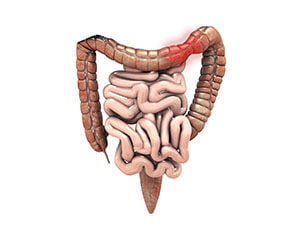How the Brain, Spinal Cord, and Nerves Control Your Digestive System.

Introduction
The bowel, a crucial component of the digestive system, undergoes a complex series of neural control and muscular actions to facilitate the digestion and elimination of waste from the body. In this comprehensive article, we will delve deeper into the anatomy and physiology of the bowel, exploring the neural connections, neural control from the brain and peripheral nerves, and the role of bowel muscles in its proper functioning.
I. Anatomy of the Bowel:
The bowel, also known as the large intestine or colon, consists of several segments: the cecum, ascending colon, transverse colon, descending colon, sigmoid colon, and rectum. Understanding the structure of the bowel is essential to comprehend its functional processes.
A. Major Components:
- Cecum: The cecum is the pouch-like structure that receives digested food from the small intestine through the ileocecal valve.
- Colon: The colon is divided into ascending, transverse, descending, and sigmoid regions, responsible for absorbing water, electrolytes, and some nutrients from digested food.
- Rectum: The rectum is the final segment of the bowel, serving as a storage reservoir for feces before elimination.
B. Muscular Layers: The bowel wall comprises three layers of muscles:
- Longitudinal Muscles: These muscles run along the length of the bowel, aiding in peristaltic movements.
- Circular Muscles: These muscles encircle the bowel, enabling mixing and propelling of fecal matter.
- Inner Oblique Muscles: These muscles add an additional layer of strength and coordination to the muscular contractions.
II. Neural Control of the Bowel:
The neural control of the bowel involves an intricate interplay between the enteric nervous system (ENS) and the autonomic nervous system (ANS).
A. Enteric Nervous System (ENS): The ENS is an intricate network of nerves embedded within the bowel wall. It operates independently and governs various bowel functions, including muscle contractions, secretion of digestive enzymes, and absorption of nutrients.
B. Autonomic Nervous System (ANS): The ANS regulates the overall functioning of the bowel through two divisions: the sympathetic and parasympathetic divisions.
- Sympathetic Nervous System: The sympathetic nerves, originating from the thoracic and lumbar regions of the spinal cord, play a role in inhibiting bowel motility and reducing blood flow to the bowel. Activation of the sympathetic nerves can lead to decreased peristalsis and increased contraction of the anal sphincters.
- Parasympathetic Nervous System: The parasympathetic nerves, originating from the cranial and sacral regions of the spinal cord, stimulate bowel motility and increase blood flow to the bowel. Activation of the parasympathetic nerves promotes digestion and enhances peristaltic movements.
III. Bowel Motility:
Bowel motility refers to the coordinated muscular contractions that propel the contents through the bowel for digestion and elimination.
A. Peristalsis: Peristalsis is the primary mechanism responsible for moving food and waste through the bowel. It involves rhythmic contractions and relaxations of the circular and longitudinal muscles, resulting in a wave-like motion that propels the contents forward.
B. Haustral Churning: Haustral
IV. Neural Control and Reflexes of the Bowel:
- Defecation Reflex: The defecation reflex is a complex neural process that coordinates the elimination of waste from the rectum. It involves both voluntary and involuntary components.
- Sensory Signals: Stretch receptors in the rectum detect the presence of fecal material, sending signals to the spinal cord.
- Parasympathetic Activation: The parasympathetic nerves are stimulated, leading to increased rectal contractions and relaxation of the internal anal sphincter.
- Voluntary Control: Conscious awareness and control over the external anal sphincter allow for the suppression or initiation of defecation.
- Neural Control of Pelvic Floor Muscles: The pelvic floor muscles play a crucial role in bowel control and continence. They provide support to the bowel and assist in maintaining fecal continence. The coordination of these muscles is regulated by both the somatic nervous system (voluntary control) and the autonomic nervous system.
- Somatic Nervous System: The somatic nerves innervate the pelvic floor muscles, allowing for voluntary control and the ability to contract and relax the muscles consciously.
- Autonomic Nervous System: The autonomic nerves, particularly the parasympathetic nerves, modulate the tone and function of the pelvic floor muscles.
V. Bowel Disorders and Dysfunctions:
- Irritable Bowel Syndrome (IBS): IBS is a common functional gastrointestinal disorder characterized by symptoms such as abdominal pain, bloating, altered bowel habits, and bowel movement difficulties. Although the exact cause of IBS is not fully understood, dysregulation of the neural control and muscular coordination of the bowel is believed to contribute to its development.
- Constipation: Constipation refers to infrequent bowel movements or difficulty passing stools. It can result from various factors, including inadequate dietary fiber intake, dehydration, reduced bowel motility, or neurological conditions affecting bowel function. Dysfunction in the neural control of the bowel and pelvic floor muscles can also contribute to constipation.
- Diarrhea: Diarrhea is characterized by frequent, loose, and watery stools. It can be caused by infections, dietary intolerances, medications, or underlying medical conditions affecting the bowel. Altered neural control and muscular coordination may also lead to abnormal bowel movements and contribute to diarrhea.
VI. Pelvic Floor Considerations:
The pelvic floor muscles play a vital role in bowel function, working in conjunction with the neural control of the bowel. Dysfunction or weakness in the pelvic floor muscles can contribute to various bowel disorders, including fecal incontinence and difficulty with bowel movements.
- Pelvic Floor Dysfunction: Pelvic floor dysfunction can result from weakened or overactive pelvic floor muscles, affecting bowel control and causing symptoms such as incontinence or incomplete bowel emptying.
- Pelvic Floor Rehabilitation: Pelvic floor physiotherapy is an effective approach in addressing pelvic floor dysfunction. It includes exercises to strengthen or relax the pelvic floor muscles, biofeedback techniques, and lifestyle modifications to improve bowel control and overall function.
VII. Conclusion:
The intricate neural control and muscular coordination of the bowel are crucial for its proper functioning. Understanding the interplay between the enteric and autonomic nervous systems, along with the reflexes and mechanisms involved in bowel motility, provides insights into the development and management of bowel disorders and dysfunctions.
Additionally, considering the pelvic floor's role in bowel control and its interaction with the neural control of the bowel is essential for a comprehensive understanding of bowel function. Addressing pelvic floor dysfunction through targeted physiotherapy can significantly improve bowel control and overall quality of life.


